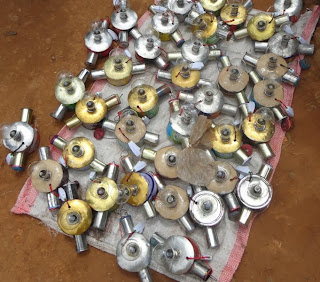By Murigi Ndung’u
A group of elephants visited Ndaragwiti
village in tow with their young ones, the herd was one of the major visits
experienced with minor damages and destruction. Though maize in the yards were
abundance, they caused minimal damage, maybe a gnaw at their ‘‘long lost’’
fruits or herb.
This is unusual. Elephants are some
of the animals that are guided by instinct, or why could they drop in so
unexpectedly? Did they come to say hi? It’s worth noting that more or less the damage
to their habitat could have instigated from-the-blue call. It is most likely
that the long lost fruit was cut off from existence when a wood cutting human visited
the woodlot.
The environmental change is no joke
and could cause unprecedented disorders into our very livelihoods. The
wangwachi dam that has been a source of daily bread to many is now endangered,
directly by humanity and climate change. Whenever elephants visit, they only
come to report its sadness on the illegal evacuation from its natural home.
If we keep mum, the fish flying in
the wangwachi dam are now an endangered species destined for the books of
history. Though blinded in oblivion, the environmental degradation that has
seen the fall of some basic features has some wee bit of ignorance.
It is true that though somebody
burned a heap of charcoal and sold it at an astronomical price, the price they
are to pay on the environmental effects of the consequences of their actions is
far much severe.
What do you say when the once readily
available fish consumed with the African cake disappears? Life will never be
business as usual, will it?
Elephants desperate of something to
eat will come after our toilsome harvest and the lions will lurk behind the
bushes waiting for our herds.
Once the tight balance between the
humanity and the environment is upset, the aftermath will be one uncontrollable
blast that will be of no desire to man.










